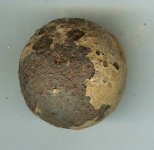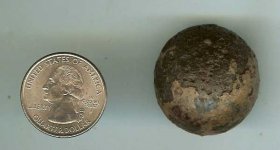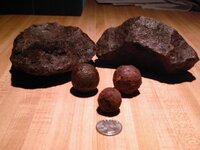Getty
Bronze Member
I found this item in my front yard last year.I thought it was some kind of big ball bearing.My town was established in 1875 and there was some CW movement through this area.After showing this to a few people on this site ,I would like to hear some other opinions.The first pic is as it was found. The second pic is after only 5 days in olive oil.What do you think?? ?
? ? ? ? ? ? ?Thanx for lookin ,jimmy
? ? ? ? ? ? ?Thanx for lookin ,jimmy
Amazon Forum Fav 👍
Attachments
Upvote
0




 I can say it's a metal ball.
I can say it's a metal ball.

